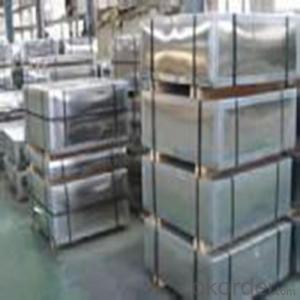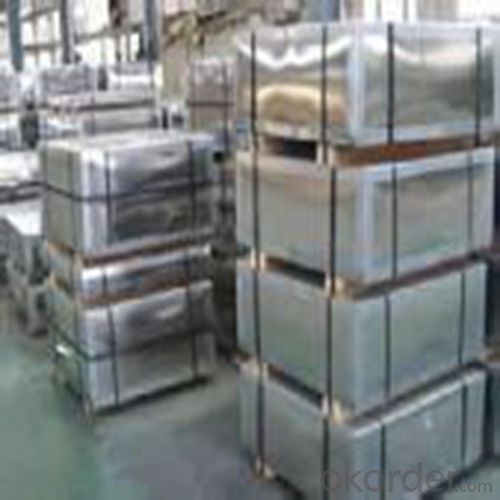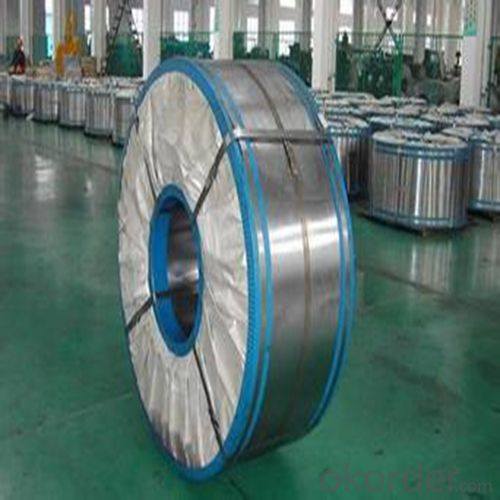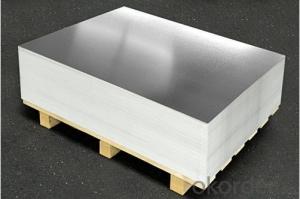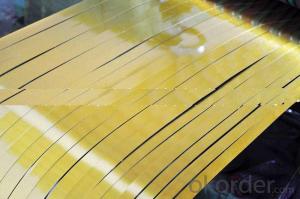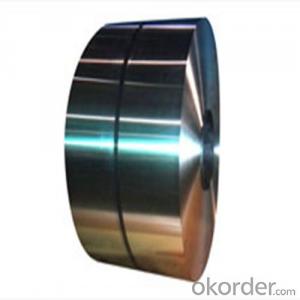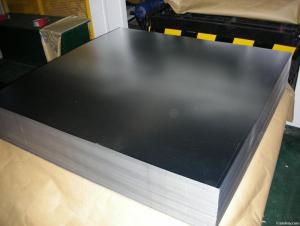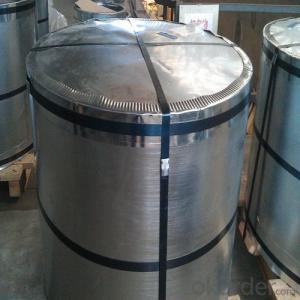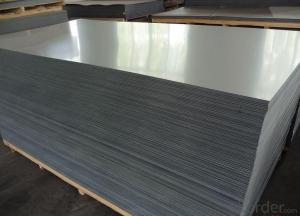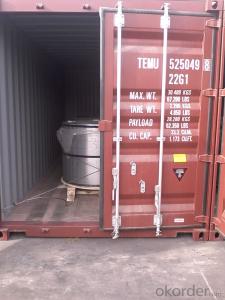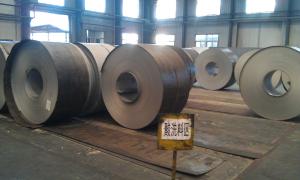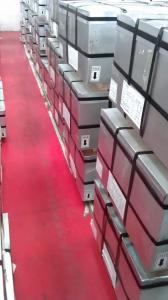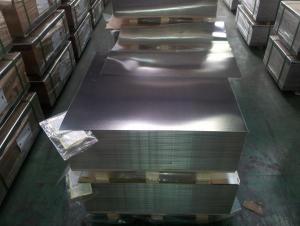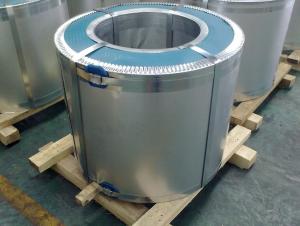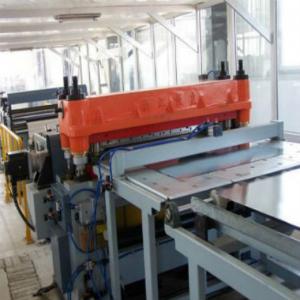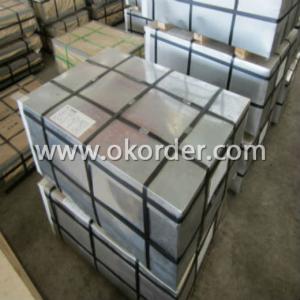Electrolytic Tinplate for Chemical Industrial Can Use
- Loading Port:
- Qingdao
- Payment Terms:
- TT OR LC
- Min Order Qty:
- 50 m.t.
- Supply Capability:
- 30000 m.t./month
OKorder Service Pledge
OKorder Financial Service
You Might Also Like
1.Structure of ElectrolyticTinplate for Chemical Industrial Can Use Description
Electrolytic Tinplate, is one thin steel sheet with a coating of tin applied by electrolytic deposition. Tinplate made by this process is essentially a sandwich in which the central core is strip steel. This core is cleaned in a pickling solution and then fed through tanks containing electrolyte, where tin is deposited on both sides. As the strip passes between high-frequency electric induction coils, it is heated so that the tin coating melts and flows to form a lustrous coat.
2.Main Features of the ElectrolyticTinplate for Chemical Industrial Can Use
The salient feature of DR Tinplate is the combination of higher strength and sufficient ductility, which enables much thinner Tinplate to be used, compared to Single Reduced Tinplate resulting in Substantial economic savings.
According to the steel chemistry and annealing process, the second reduction (DR08) can be between 27% to 40%, thereby producing strengths upto 550 +/-50 N/mm2, whereas single reduced material has strength less than 450 N/mm2 &DR 09 (Hard DR) is produced at temper mill with reduction % in range of 27-35 % & will strength upto 690 N/mm2 to the produced material.
3. ElectrolyticTinplate for Chemical Industrial Can Use Images
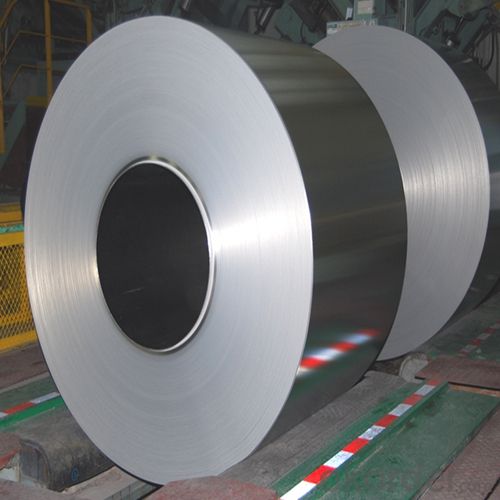
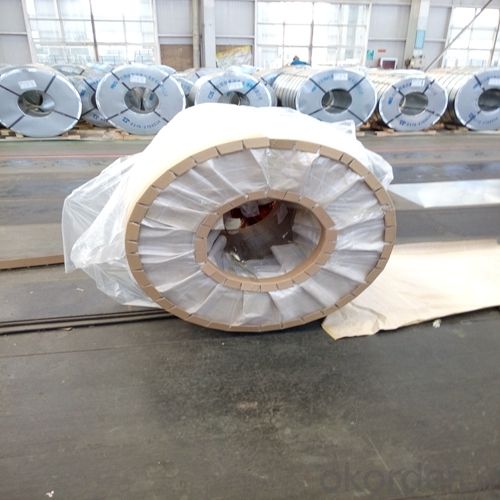
4.ElectrolyticTinplate for Chemical Industrial Can Use Specification
Standard: ISO 11949 -1995
Material: MR
Thickness:0.34mm
Width: 600mm
Temper: T3
Annealing: BA
Coil Inner Diameter: 508mm
Weight: 6-10 tons/coil 1~1.7 tons/sheets bundle
Passivation:311
Oil: DOS
Surface: Finish
5.FAQ of ElectrolyticTinplate for Chemical Industrial Can Use
- How are the tinplates specified?
The tinplates are specified as per the steel base, extent of tempering, the coating weight, annealing method and the surface finish.
- How many types there are for base steels?
The base steels are of three types: Type MR, L, D
- Q: How does tinplate packaging contribute to product protection against leakage?
- Tinplate packaging provides a strong barrier against moisture and air, preventing leakage and maintaining the integrity of the product inside. The tin coating on the steel surface ensures excellent corrosion resistance, enhancing the packaging's ability to protect against leaks. Additionally, tinplate packaging is highly durable and able to withstand external pressures, reducing the risk of package damage that could lead to leakage. Overall, the use of tinplate packaging significantly contributes to product protection and helps prevent leakage.
- Q: Can tinplate be customized with different designs or logos?
- Yes, tinplate can be customized with different designs or logos. It is a versatile material that can be decorated using various printing techniques such as lithography, offset printing, or embossing. This allows for the creation of unique and personalized designs on tinplate, making it suitable for branding and promotional purposes.
- Q: How does tinplate perform in terms of product protection?
- Tinplate performs exceptionally well in terms of product protection. Its unique properties, including corrosion resistance and durability, make it an ideal choice for packaging solutions. Tinplate provides a reliable barrier against moisture, light, and air, effectively preserving the quality and freshness of the product. Additionally, its strength and rigidity offer excellent physical protection, safeguarding the contents from external impacts during handling and transportation. Overall, tinplate ensures optimal product protection, extending shelf life and enhancing customer satisfaction.
- Q: Can tinplate be used for aerospace applications?
- Yes, tinplate can be used for certain aerospace applications, particularly for non-critical components where weight is not a significant concern. Tinplate is known for its corrosion resistance and affordability, which makes it suitable for certain aerospace applications such as interior fittings, non-structural parts, and packaging. However, for critical components that require high strength-to-weight ratio or extreme durability, other materials like aluminum or titanium are typically preferred.
- Q: Can tinplate be used for stationery and office supplies?
- Yes, tinplate can be used for stationery and office supplies. It is a versatile material that can be easily shaped into various forms such as pencil cases, storage boxes, and document holders. Additionally, tinplate is durable, lightweight, and has a visually appealing metallic finish, making it suitable for both functional and aesthetic purposes in the stationery and office supply industry.
- Q: How is tinplate used in the wine and spirits industry?
- Tinplate is commonly used in the wine and spirits industry for packaging purposes. It is often used to make metal cans, closures, and caps for wine and spirits bottles. Tinplate provides a protective and durable barrier against light, air, and moisture, ensuring the quality and shelf life of the product. Additionally, the smooth and shiny surface of tinplate enhances the overall aesthetics of the packaging, giving it a premium and sophisticated look.
- Q: Can tinplate be used for packaging household cleaning products?
- Yes, tinplate can be used for packaging household cleaning products. Tinplate is a durable and corrosion-resistant material that provides protection to the products and ensures their shelf life. It is commonly used in the packaging industry for a wide range of products, including household cleaning products.
- Q: What are the industry standards for tinplate?
- The industry standards for tinplate typically include specifications regarding the thickness, coating weight, surface finish, and mechanical properties of the tinplate. These standards ensure that tinplate meets the required quality and performance criteria in various industries, such as packaging, automotive, and electronics.
- Q: Can tinplate be used for confectionery packaging?
- Yes, tinplate can be used for confectionery packaging. Tinplate is a type of steel coated with a thin layer of tin, making it a durable and food-safe material. It provides excellent protection against moisture, light, and oxygen, which are important for maintaining the freshness and quality of confectionery products. Additionally, tinplate can be easily shaped and decorated, allowing for attractive and customized packaging designs.
- Q: What are the different methods of labeling and branding on tinplate packaging?
- There are several methods of labeling and branding on tinplate packaging, including direct printing, lithography, embossing, and labeling with adhesive labels. Direct printing involves printing the design directly onto the tinplate using ink or paint. Lithography is a high-quality printing process that involves transferring the design onto the tinplate using a series of rollers. Embossing creates raised or recessed designs on the tinplate by pressing it with a die. Lastly, labeling with adhesive labels involves applying pre-printed labels onto the tinplate surface.
Send your message to us
Electrolytic Tinplate for Chemical Industrial Can Use
- Loading Port:
- Qingdao
- Payment Terms:
- TT OR LC
- Min Order Qty:
- 50 m.t.
- Supply Capability:
- 30000 m.t./month
OKorder Service Pledge
OKorder Financial Service
Similar products
Hot products
Hot Searches
Related keywords
